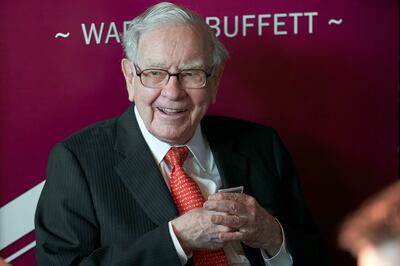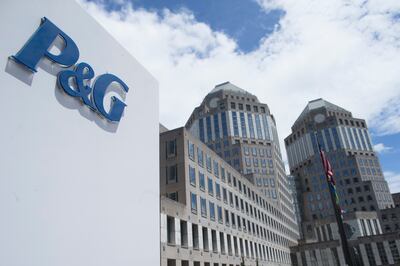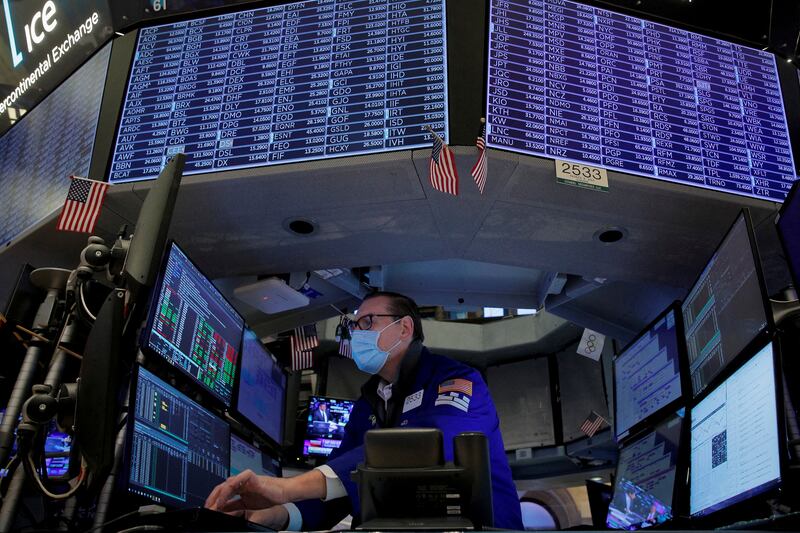Related: Is it game over for Big Tech and Bitcoin?
Some investment terms are easy to understand but others take a little more explanation.
Most people instinctively get what a “growth stock” is. It is a stock that grows — rapidly, if you are lucky. Think Apple, Amazon, Tesla and the like. Growth stocks have been all the rage over the past decade but as performance slips, “value stocks” are swinging back into favour and these require a little more explanation.
A value stock is an investment that trades at a lower price than a company’s financial performance suggests it should. In other words, it looks good value. Some prefer the word “cheap”.
Investors measure value by looking at key metrics such as the price-to-earnings (P/E) ratio, which divides a company’s share price by its earnings.
Fair value is typically considered to be 15 times earnings. Right now, growth stocks look expensive by this measure. Tesla trades at a staggering 299 times earnings as investors anticipate fabulous growth tomorrow (rather than steady earnings today).
By contrast, rival car manufacturer General Motors trades at a lowly 6.95 times earnings. Investors are not expecting rapid growth but they may see value.
Value stocks have other characteristics, such as a low price-to-book (P/B) value. This is found by dividing a company’s share price by its “book value”, which is its total assets minus any liabilities.
A figure of one suggests a fair book value. However, London-listed banks Barclays and Lloyds trade at PBs of 0.5 and 0.7 per cent, respectively, suggesting they are good value.
Value stocks typically offer generous dividends as a way of rewarding investors for the lack of long-term growth prospects.
Humdrum UK insurer Legal & General Group currently yields 6.2 per cent, while world-beating Apple yields only 0.55 per cent.
So, why the shift from growth to value and will it continue?
There are several reasons why value investing is regaining popularity, Vijay Valecha, chief investment officer of Century Financial in Dubai, says.
“Growth stocks have become prohibitively costly and investors are now looking for better value.”
Others are taking risk off the table. “Value stocks won’t grow as fast but are likely to be less volatile and give you fewer restless nights,” Mr Valecha says.
The shift is taking place as the era of low interest rates and rampant fiscal and monetary stimulus draws to a close. Rising inflation is forcing the US Federal Reserve and other central bankers to tighten their monetary policies, which will hit growth.
“Value stocks appear to be a safer bet while the market bleeds red,” Mr Valecha says.
History suggests that this is the right stage of the cycle for value stocks.
“They typically outperform during falling markets and economic recessions, whereas growth equities outperform during bull markets or periods of economic prosperity,” he says.
Investors should not be too downcast by the end of the growth stock explosion, Mr Valecha says.
“A value-led stock market may offer a more appealing risk-reward profile.”
Value stocks have been caught in a trap for the past decade as low growth, low inflation and low interest rates worked against them, Arnab Das, global macro strategist for Europe, the Middle East and Africa at fund manager Invesco, says. That is now changing.
“Every dog has its day and value is back in vogue.”
Geopolitical tensions, particularly around Russia and Ukraine, also favour less volatile value over growth and gold relative to struggling cryptocurrencies, Mr Das says.
Dividend-paying value sectors such as financials, industrials, energy and consumer staples may now start to show their worth as inflation climbs.
“These generate cash flows today, which makes them more resistant to rising inflation and rising rates,” Mr Das says.
Tobacco, health care and mining stocks may also outperform.
Value is back in vogue for the simple reason that it works, Robert White, portfolio manager at MGIM, says.
“Academic studies show that value stocks provide investors with excess returns over time but the journey is far from smooth.”
Now could be a good time to hop on board. “Even after the recent rally, value stocks are still trading close to record discounts, which is typically an indicator of healthy returns to come,” Mr White says.
Investors need to be patient because value stocks can take longer to prove their worth than flashy growth stocks.
Others remain sceptical. Talk of a value resurgence may have been overdone, Aziz Alnaim, lead portfolio manager of the Mayar Responsible Global Equity Fund, says.
“Proclamations of the revival of value investing from its long slump have been more common than visible results.”
When investors panic and indiscriminately sell good stocks along with the bad, buying value stocks can yield great results, he says.
“Buying companies at low multiples to reported accounting metrics has long been a profitable strategy, but investors cannot build a retirement nest egg on such few and far between moments.”
Investors must be wary of pinning too much hope on buying “cheap” companies as measured by their P/E or P/B ratio, Mr Alnaim says.
“The old metrics appear to have stopped working during a time in which the economy, and the way businesses invest, has changed.”
Arguably the world’s greatest investor, US billionaire Warren Buffett, is a value investor who famously claimed when picking stocks: “Price is what you pay, value is what you get.”
His Berkshire Hathaway investment vehicle has delivered an average growth rate of about 20 per cent a year between 1964 and 2020, double the S&P 500 average, and 2021 was another good year.

Mr Buffett’s top holdings include value stocks Bank of America, American Express and Coca-Cola, although he found room for Apple, too.
Value stocks have another advantage, Chaddy Kirbaj, vice director of Swissquote Bank, says. “They offer promising opportunities for patient, long-term investors who prefer not to stress over daily market ups and downs.”
Exchange-traded funds (ETFs) can give you exposure and spread risk. Mr Kirbaj tips the $86 billion Vanguard Value Fund ETF, which has delivered an average annual return of 13.74 per cent over the past decade.
Mr Buffett’s Berkshire Hathaway vehicle is the single biggest holding in its US-focused portfolio, while JP Morgan Chase, Johnson & Johnson, Procter & Gamble, Pfizer, Bank of America and Exxon mobile all feature. Charges are super low at only 0.04 per cent a year.
Mr Kirbaj also tips the Invesco US 1000 ETF, a smaller fund with $5.5bn in total assets that chooses stocks based on book value, cash flow, sales and dividends.
It has a higher annual total expense ratio of 0.39 per cent a year but its average annual gain is 14.83 per cent over the past decade.
It is up a thumping 31.6 per cent so far this year, a clear indication of how well value stocks are doing at the moment.
David Jones, chief market analyst at European investment trading platform Capital.com, suggests iShares MSCI USA Value Factor, which has grown by 11.97 per cent a year on average since its launch in 2014.
“Insurers and utilities offer more stability than the tech high flyers, plus you get a reasonable dividend to boot,” Mr Jones says.
Mr Valecha highlights two value stocks for those happy with the added risk of buying individual company shares.
Both are huge, established names from the US. The first is Procter & Gamble, whose personal care brands include Ariel, Crest, Gillette, Oral-B and Pampers.
“It has continuously added to its revenues to become one of the market’s most dependable dividend companies, increasing its dividend every year.”
Mr Valecha also tips healthcare and consumer products company Johnson & Johnson. “It has consistently increased sales and dividends over time.”
For ETF investors, he highlights Vanguard Selected Value, an actively managed fund that focuses on undervalued mid-cap companies, including financials and industrials.
He also favours the Consumer Staples Select Sector SPDR ETF, whose top holdings include P&G, Coca-Cola, Altria, Walmart and Colgate-Palmolive. “These companies sell things that people will continue to buy in practically any economic conditions.”

Mr White admires the actively managed Artisan Global Value Fund, which has delivered an average annual return of 10.96 per cent over the past decade.
“The team has a high conviction approach and an obsession with quality. They invest in 30 to 40 stocks with healthy balance sheets and plenty of cash flow, which has helped them avoid value traps.”
He also tips the Hotchkis and Wiley Global Value Fund, which has delivered an average annual return of 9.91 per cent since launching in December 2012.
“It holds a diversified portfolio of 50 to 60 stocks trading at steep discounts to normalised earnings. Its large allocation to banks could be beneficial as interest rates rise.”
Growth and value is not an either/or proposition, so check your portfolio has the right balance, Laith Khalaf, head of investment analysis at AJ Bell, says.
“It pays to have a foot in both camps, so that whichever is in the ascendancy, your portfolio is still making progress.”






